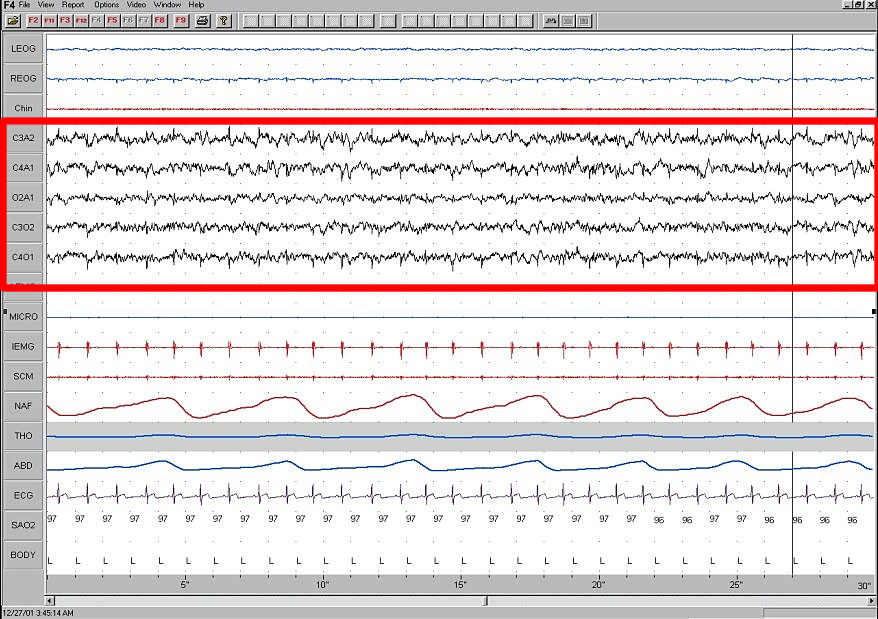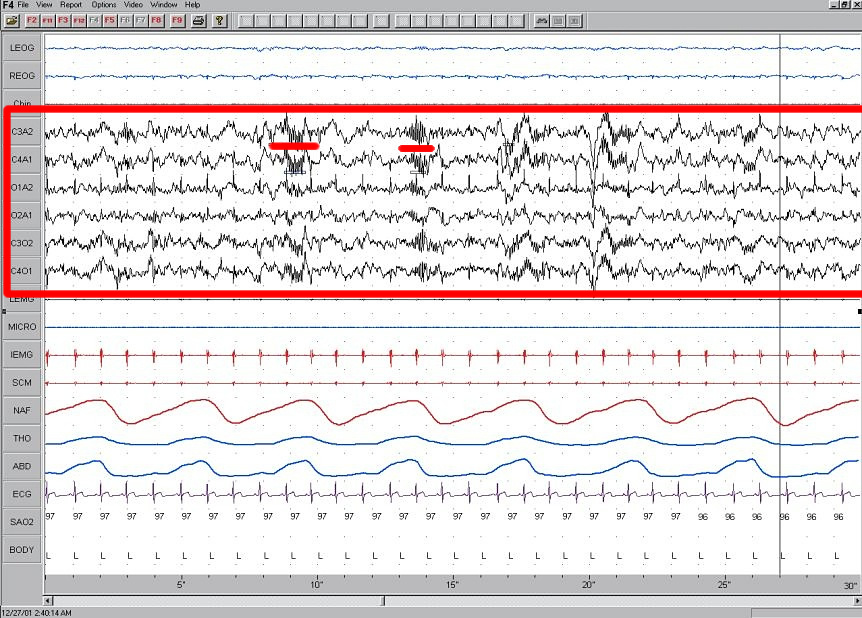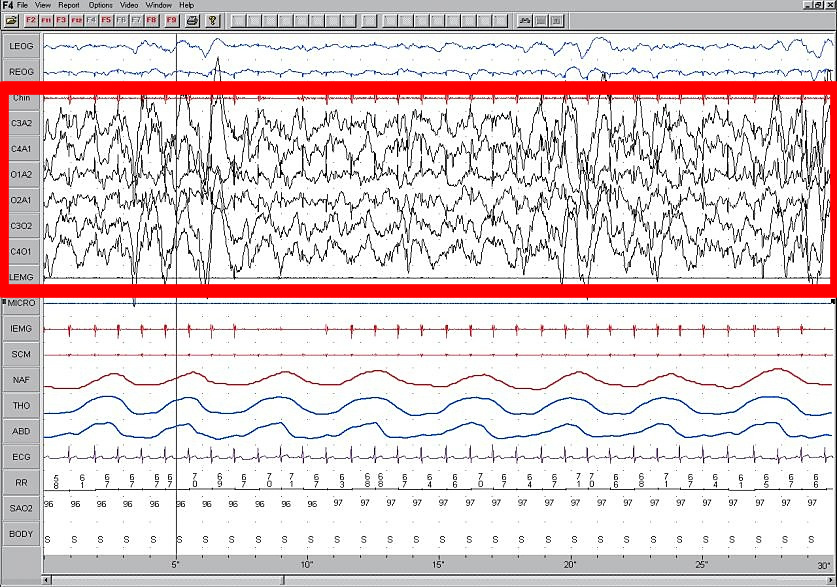Non-rapid eye movement sleep
The sleep stages 1 through 4 are collectively referred to as NREM (non-rapid eye movement) sleep. Rapid eye movement (REM), or stage 5, is not included. There are distinct electroencephalographic characteristics seen in each stage. Unlike REM sleep, there is usually little or no eye movement during this stage. Dreaming is rare during NREM sleep, and the muscles are not paralyzed as in REM sleep.
In addition, there is a parasympathetic dominance during NREM.
Stages of NREM sleep
NREM sleep is divided into four stages:
- Stage 1 - occurs in the beginning of sleep, with slow eye movements. Disappearance of alpha waves and appearance of the theta wave. People in this stage often believe that they are fully awake. During the transition into Stage 1 sleep, it is common to experience hypnic jerks.
- Stage 2 - the person is unconscious[verification needed], though awakened easily. No eye movements occur, and dreaming is very rare during this stage. EEG recordings tend to show characteristic "sleep spindles" and "K-complexes" during this stage.
- Stage 3 - transition between stage 2 and stage 4. Delta waves begin to occur which are associated with "deep" sleep.
- Stage 4 - slow-wave sleep (SWS) refers to the "deepest" stage of sleep in which there is a continuation of the delta wave. Dreaming is more common in this stage than in other stages of NREM sleep though not as common as in REM sleep. The content of SWS dreams tends to be disconnected and not as vivid as those that occur during REM sleep. This is also the most common stage in which parasomnias occur.
Polysomnography
Polysomnography (PSG) is a test used in the study of sleep; the test result is called a polysomnogram. Below are images of each stage of NREM.
The figures represent 30 second epochs (30 seconds of data). They represent data from both eyes, chin, EEG, legs, microphone, intercostal EMG, sternocleidomastoid activity, nasal/oral air flow, thoracic effort, abdominal effort, EKG, oxymetry, and body position, in that order. EEG is highlighted by the red box. Sleep spindles in the stage 2 figure are underlined in red.
See also
- Jacques Lacan
- Preconscious
- Portal:thinking
- List of thought processes
- Unconscious mind
- Lucid Dream


